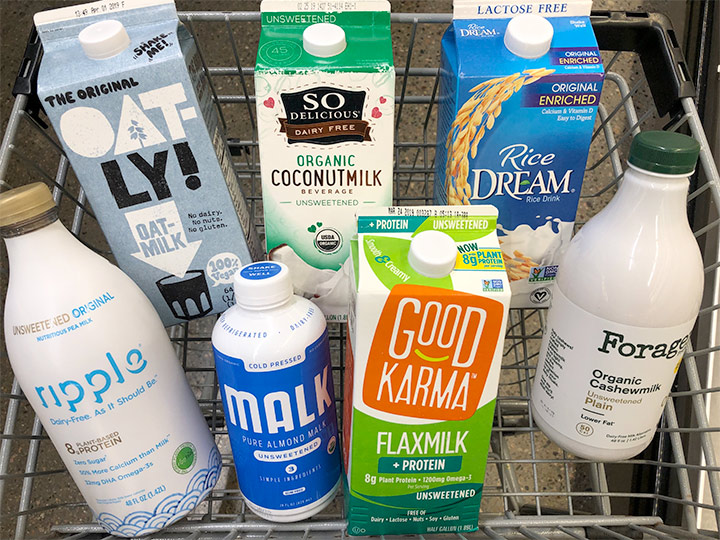Your order has just been called at your morning coffee shop. Once you arrive at the beverage station, you’re confronted with what seems to be at least 17 options for milk in your coffee. Selections ranging from regular dairy, to oat, almond, and soy, creamer options abound these days, which is good news for vegans everywhere. But not everyone is pleased — namely, the dairy industry.
— “Plant milk has been around longer than you think” in VinePair.com
They warned us… that the next wars were going to be over water.
But it seems we are going to have to fight about milk, first.
At the moment, the fighting has been mainly verbal. Accusations. Like comments from Laurie Fischer with the American Dairy Coalition in Dairy Processing magazine.
The American Dairy Coalition (ADC) is urging organizations, as well as dairy farmers, to ask the U.S. Food and Drug Administration (FDA) to enforce the standards of identity on milk, which would allow only traditional dairy products to be labeled as milk…
…“Plant-based companies and trade associations, including the American Beverage Association, are supporting and congratulating FDA on its draft guidance, which could mean full speed ahead for fake alternatives to be labeled as ‘milk’ without containing any milk, and it is a total fabrication,” she said.
I can see her point. When I was a kid, there seemed to be only six types of milk. Whole, low-fat, skim, evaporated, condensed, and chocolate. (There was also breast milk, but my family avoided talking about that. We avoided talking about a lot of interesting topics.)
There was also a semi-transparent liquid inside the coconuts at Safeway which my mom referred to as ‘coconut milk’. But we understood that it wasn’t really ‘milk’ milk.
Over in China, things were different. The Chinese have been using soy milk since the 14th century. They didn’t call it “milk” of course, because they didn’t speak English. But if you type dòujiāng into Google Translate, the translation is “soy milk”.
A similar situation applies to halib allawz, which is the Arabic word for “almond milk” — mentioned in a Baghdadi cookbook in the 13th century, and already a popular item in Egyptian kitchens by the 14th century.
In fact, if you type halib allawz into Google Translate, the English translation is “better milk”, which I’m sure causes the folks at American Dairy Coalition a lot of heartburn.
(It should make us all question Google Translate. Which I’ve been saying for many years now.)
The point being, it’s difficult to support the ADC claim that use of the word “milk” — for almond milk and soy milk and oat milk and all the other “milks” — is a “total fabrication”, considering that almond milk was a common ingredient in kitchens 500 years before we ever saw chocolate milk in the dairy case.
According to health professionals — cup for cup — most plant-based milks contain up to 75 percent less fat and are lower in calories. For those of us who are environmentally conscious, (which is all of us, right?) non-dairy alternatives require less land, energy, and water, and their production emits much lower quantities of greenhouse gases. (Think, methane, which doesn’t come from almonds.)
But the main concern, as with so many of these controversies, is money.
The non-dairy milk industry is reportedly worth over $22 billion and is expected to expand to $53 billion by 2028. Like, more than double.
Overall, non-dairy milks now represent 15 percent of the total “milk” market, much to the dairy industry’s distress. So, maybe 30 percent within the next few years?
It’s enough to make anyone want to use terms like “fake alternatives” and “total fabrication”.
It appears, however, that the fake alternatives might have the FDA on their side.
Could it be… that the acronym “FDA” actually stands for “Fake Dairy Alternatives”?
Underrated writer Louis Cannon grew up in the vast American West, although his ex-wife, given the slightest opportunity, will deny that he ever grew up at all. You can read more stories on his Substack account.


